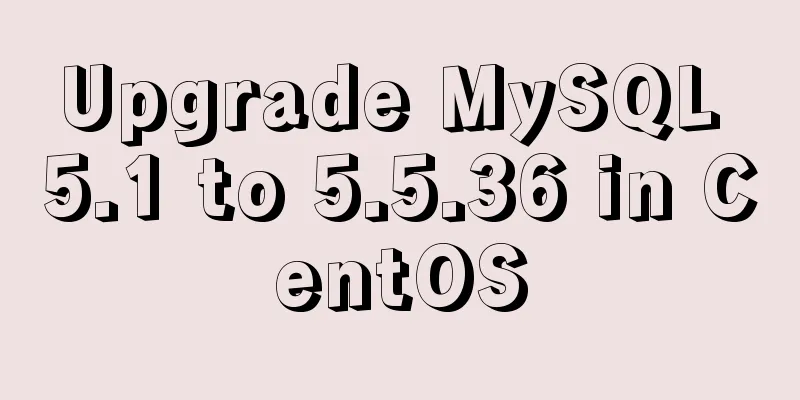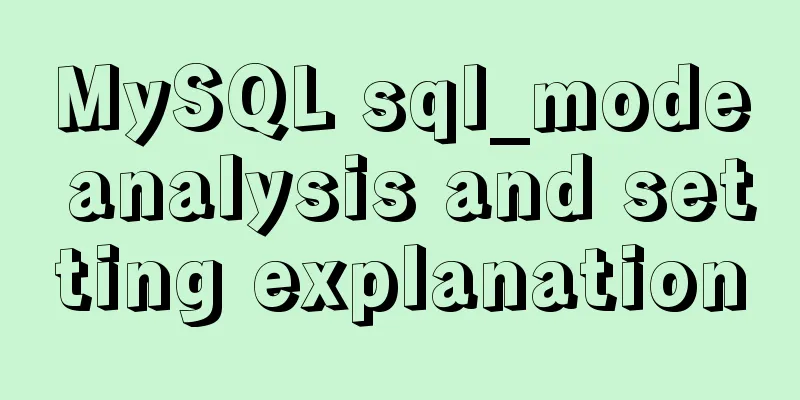Upgrade MySQL 5.1 to 5.5.36 in CentOS

|
This article records the process of upgrading MySQL 5.1 to 5.5.36 in the CentOS 6.4 environment. I hope it can be a reference for everyone. 1. For safety reasons, you first need to back up the original data 2. Uninstall the original MySQL, stop the original MySQL service first, then search find / -name mysql [root@linuxidc /]# find / -name mysql /var/lib/mysql /var/lib/mysql/mysql /usr/lib64/mysql and remove the service [root@linuxidc /]# rm -rf /var/lib/mysql [root@linuxidc /]# rm -rf /var/lib/mysql [root@linuxidc /]# rm -rf /usr/lib64/mysql 3. Install cmake [root@linuxidc download]# wget http://www.cmake.org/files/v2.8/cmake-2.8.12.2.tar.gz [root@linuxidc download]# tarx zvfc cmake-2.8.12.2.tar.gz [root@linuxidc download]# cd cmake-2.8.12.2 [root@linuxidc cmake-2.8.12.2]# ./configure [root@linuxidc cmake-2.8.12.2]# make && make install 4. Download and install MySQL 5.5.36 [root@linuxidc download]# wget http://dev.mysql.com/get/Downloads/MySQL-5.5/mysql-5.5.36.tar.gz [root@linuxidc download]# tar xzvf mysql-5.5.36.tar.gz [root@linuxidc download]# cd mysql-5.5.36 [root@linuxidc mysql-5.5.36]# cmake -DCMAKE_INSTALL_PREFIX=/usr/local/mysql -DEXTRA_CHARSETS=all -DDEFAULT_CHARSET=utf8 -DDEFAULT_COLLATION=utf8_general_ci -DWITH_READLINE=1 -DWITH_SSL=system -DWITH_ZLIB=system -DWITH_EMBEDDED_SERVER=1 -DENABLED_LOCAL_INFILE=1 -DMYSQL_DATADIR=/home/mysql [root@linuxidc mysql-5.5.36]# make && make install An error occurred during the cmake process, prompting Could NOT find Curses (missing: CURSES_LIBRARY CURSES_INCLUDE_PATH) Just execute the following code, after execution, continue with cmake, then make && make install [root@localhost mysql-5.5.36]# rm CMakeCache.txt [root@localhost mysql-5.5.36]# yum install ncurses-devel 5. Next, you need to copy the previously backed up my.cnf file to /etc/my.cnf MySQL will read /etc/my.cnf /etc/mysql/my.cnf /usr/local/mysql/etc/my.cnf /.my.cnf. The file on the left has the highest priority. 6. After configuration, we start MySQL and find a problem. Starting MySQL prompts: The server quit without updating PID file (…) failed Check the log file address /var/log/mysqld.log set in the my.cnf file. The error message is as follows 170715 12:31:36 mysqld_safe mysqld from pid file /var/lib/mysql/linuxidc.pid ended 170715 12:57:48 mysqld_safe Starting mysqld daemon with databases from /home/mysql 170715 12:57:48 InnoDB: The InnoDB memory heap is disabled 170715 12:57:48 InnoDB: Mutexes and rw_locks use GCC atomic builtins 170715 12:57:48 InnoDB: Compressed tables use zlib 1.2.3 170715 12:57:48 InnoDB: Initializing buffer pool, size = 128.0M 170715 12:57:48 InnoDB: Completed initialization of buffer pool 170715 12:57:48 InnoDB: highest supported file format is Barracuda. 170715 12:57:48 InnoDB: Waiting for the background threads to start 170715 12:57:49 InnoDB: 5.5.36 started; log sequence number 2645823 170715 12:57:49 [ERROR] /usr/local/mysql/bin/mysqld: unknown variable 'default-character-set=utf8' 170715 12:57:49 [ERROR] Aborting This error is caused by the character set of [mysqld] in the /etc/my.cnf configuration file. The solution is to change default-character-set=utf8 to character_set_server=utf8 7. Connect to mysql through the mysql -u root -p command. (We have installed MySQL before, and the database files are still there, so there is no need to add users to set permissions) An error message appeared: ERROR 2002 (HY000): Can't connect to local MySQL server through socket '/tmp/mysql.sock' The reason for the error is that our mysql.sock file is in the /usr/lib/mysql/ folder You can try to connect through the following command and check the mysql version [root@linuxidc var]# mysql -u root -p -S /usr/lib/mysql/mysql.sock mysql> select version(); +-----------+ | version() | +-----------+ | 5.5.36 | +-----------+ 1 row in set (0.00 sec) You may also be interested in:
|
<<: An example of how to use nginx to configure multiple laravel projects with one domain name
>>: React+Antd implements an example of adding, deleting and modifying tables
Recommend
Summary of the differences between MySQL storage engines MyISAM and InnoDB
1. Changes in MySQL's default storage engine ...
A brief discussion on React native APP updates
Table of contents App Update Process Rough flow c...
React sample code to implement login form
As a Vue user, it's time to expand React. Fro...
VMware Workstation Pro 16 Graphic Tutorial on Building CentOS8 Virtual Machine Cluster
Table of contents Preparation Install VMware Work...
Detailed explanation of how to use WeChat mini program map
This article example shares the specific implemen...
The difference between float and position attributes in CSS layout
CSS Layout - position Property The position attri...
Understand the usage of Vue2.x and Vue3.x custom instructions and the principle of hook functions
Table of contents Vue2.x Usage Global Registratio...
Testing of hyperlink opening target
The target attribute of a link determines where th...
Drawing fireworks effect of 2021 based on JS with source code download
This work uses the knowledge of front-end develop...
Four completely different experiences in Apple Watch interaction design revealed
Today is still a case of Watch app design. I love...
VMware Workstation 12 Pro Linux installation tutorial
This article records the VMware Workstation 12 Pr...
HTML exceeds the text line interception implementation principle and code
The HTML code for intercepting text beyond multipl...
15 JavaScript functions worth collecting
Table of contents 1. Reverse the numbers 2. Get t...
Solution to Nginx 500 Internal Server Error
Today, when I was using Nginx, a 500 error occurr...
MySql learning day03: connection and query details between data tables
Primary Key: Keyword: primary key Features: canno...









